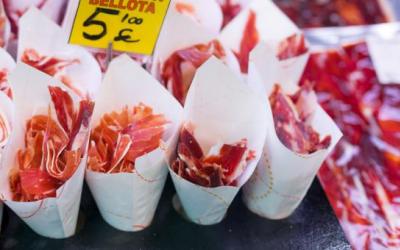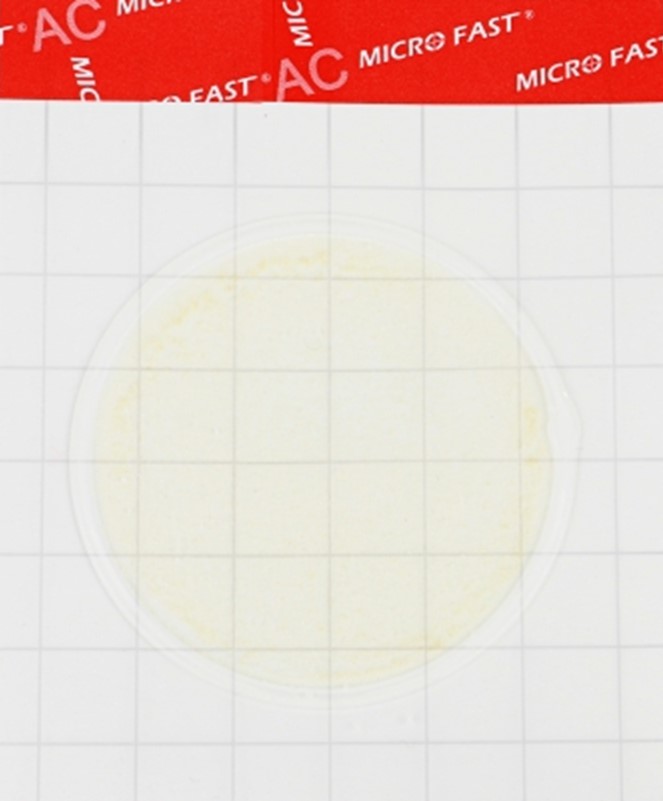Russians are eating a record amount of meat

Consumption of meat and meat products in 2023 on average per consumer in RUSSIA reached 98.2 kg (a new record), which is 4.2% more than in 2022. In previous years, the growth dynamics were more modest: in 2021-2022, consumption of meat and meat products was about 94 kg per year, in 2019-2020 - 91-92 kg (an increase of no more than 2% per year). Such data are provided in a new report by Rosstat on food consumption in Russian households, studied by RBC.
Average consumption of meat and meat products in Russia has been growing steadily since the 2000s, and compared to the mid-1990s, the Russian consumer now eats 85% more meat, according to Rosstat data (despite the fact that the data is not directly comparable due to improvements in methodology) . In 2023On average, a Russian consumed meat and meat products worth 2.86 thousand rubles. per month - 9.7% more than in 2022. At the same time, consumer prices for meat and poultry in 2023 (December compared to December of the previous year) increased in Russia by 16%, and for meat products - by 11%. Livestock and poultry production in the country increased by 2.2% in 2023 (after an increase of 3.5% in 2022), according to Rosstat data.
Data are based on a sample survey of household budgets. it covers 48.3 thousand households (quarterly), and at the end of the year, data on food consumption is generated. When forming the results of observation, its results apply to all private households in the country and to the entire population living in them (excluding the DPR, LPR, Zaporozhye and Kherson regions).
Consumption is understood as the amount of products purchased during the survey period, as well as food eaten for which the household did not pay (received as a gift, as wages, or using products of its own production, self-procurement). Eating outside the home (in particular, in restaurants and cafes) is not taken into account. The accounting methodology has changed periodically, including in 2005 and 2021.
At the same time, in 2023, Russians increased the consumption of vegetables and melons to a record level - by 2.5% by 2022, to 106.6 kg on average per person. At the same time, according to Rosstat, average prices for vegetables in 2023 increased by 26%. Potato consumption also increased - by 4.5%, to almost 55 kg (despite the fact that before that, at least since 2018, annual potato consumption had been declining). Consumption of fish and fish products increased to 23 kg (from just under 22 kg a year earlier).
On the contrary, in 2023 by 2022 there was a decrease in the consumption of bread and bread products - by 3.8%, to 86.9 kg on average per consumer per year. This is nominally the lowest bread consumption since the 1990s. Egg consumption decreased to 237 eggs on average for the year (from 240 eggs the year before). In 2023, prices for chicken eggs increased by 61%, and President Vladimir Putin attributed the increase in egg prices to increased demand.
In addition, consumption of SUGAR and confectionery products decreased by 3.7%, to 29.2 kg compared to 30.3 kg a year earlier. In previous years, consumption of sugar and confectionery products fluctuated at 31–32 kg.
How can we explain the dynamics
The decrease in sugar consumption and the increase in meat consumption are explained by changes in living standards, says Alexander Safonov, a professor at the Government Financial University. “The standard of living is growing, and, accordingly, the consumption pattern is changing, people are starting to consume more meat. The cheapest food is pasta and sugar,” he says. In 2023, real disposable income of the Russian population increased by 5.8%.
“We also need to look at the structure of meat production. When meat becomes more expensive, the consumption of beef and lamb decreases, since they are the most expensive. These types are being replaced by cheaper chicken and pork meat,” Safonov points out.
According to industry associations, in 2023, meat consumption in Russia was at the level of 80–81 kg per person per year, says Sergei Yushin, HEAD of the National Meat Association. This year, meat consumption is expected to increase to 83 kg per person. Rosselkhozbank has similar estimates, the expert points out. And Yushin explained the difference between the assessment of meat consumption by Rosstat and meat associations by different methodology.
According to him, consumption of meat and meat products has generally increased by 10% over the past ten years. This is the only product that has grown at such a pace, Yushin points out: “This is due to the fact that meat remained an economically accessible product, whilefish became more expensive and its consumption decreased.”
Over the past eight years, retail prices for pork have increased by 25%, and poultry prices by an average of 65%. Food inflation during the same time was about 70% (according to Rosstat, prices for food products without ALCOHOL increased by 64% from 2016 to 2023). “That is, meat prices grew either significantly below inflation, or slightly below inflation,” explains Yushin. In addition, meat rose in price noticeably less than fish.
Pork consumption grew at the fastest pace. While pork traditionally accounted for about 32-33% of the meat consumer basket, this year it is expected that pork will account for almost 40%. “This is due to the fact that pork prices grew at a lower rate,” Yushin notes. Today, pork is almost as affordable as poultry, and some parts of pork are even cheaper than poultry, he adds.
On the contrary, the consumption of ready-made or maximally ready-to-cook meat products is growing at a slow pace, Yushin said. This is confirmed by the dynamics of the production of sausages, delicatessen products, and canned goods, where the growth is relatively small. That is, people mainly bought economically available fresh meat to cook at home, Yushin says. In data on food consumption, purchased ready-made meals have been taken into account by Rosstat since 2021 and are divided into aggregate categories - for example, ready-made meals “with a predominance of vegetables” - into vegetables, “with a predominance of meat” - into meat.
We cannot exclude the influence of lifestyle on the consumer habits of Russians, adds Safonov. “This is a focus on healthy lifestyle (healthy lifestyle ), as well as replacing sugar with cheaper substitutes in the food industry,” he says. Citing another Rosstat study, “Dietary Diet” for 2023, RBC recently wrote that over five years, the share of both men and women limiting their sugar intake and choosing foods to lose weight has increased.
Sugar consumption is also determined by income level in the sense that it is used to preserve household products, the expert notes. “Most likely, production volumes from garden beds are falling due, among other things, to changes in the population structure. Those who are used to growing vegetables and fruits in the garden are getting older, it becomes more difficult for them to cultivate the land, and young people are not very accustomed to this,” explains Safonov. Prices for granulated sugar have increased 2.3 times since 2020 (including 10.8% in 2023). Confectionery products rose in price by only 2.8% in 2023 (but in 2022 there was an increase of 21.4%).
Read together with it:
- Indilight held a culinary masterclass with Silvena Rowe, promoting turkey as a healthy food.Silvena Rowe demonstrated original turkey cooking techniques, emphasizing its nutritional value. Participants prepared crispy turkey schnitzel with an almond-herb crust and turkey with turmeric and lime. The masterclass also emphasized a scientific approach to nutrition and promoted turkey as an ideal food for a healthy lifestyle. During the event, guests received unique gifts from the Louis Quart...
- Чего ожидать от «одной из самых рискованных» поездок ТрампаДональд Трамп начал турне по Азии, в ходе которого встретится с лидерами ключевых стран, включая Си Цзиньпина. Почему эта поездка может оказаться сложнее, чем недавние визиты в Европу и на Ближний Восток — в статье РБК Дональд Трамп Какие встречи запланированы в ходе турне Президент США Дональд Трамп вылетел из Вашингтона поздним вечером в пятницу, 24 октября, и утром в субботу его борт приземлитс...
- Производство яиц растёт в Липецкой областиЗа девять месяцев 2025 года в хозяйствах всех категорий региона получено 702,4 млн яиц. Это на 8 % больше, чем за аналогичный период прошлого года. Основным производителем и поставщиком пищевого куриного яйца в Липецкой области является сельхозпредприятие, две площадки которого расположены в Липецком округе и Грязинском районе. В день там получают порядка 1,6 млн штук яиц. За три квартала текущего...





























































